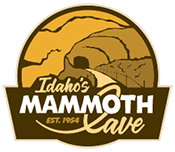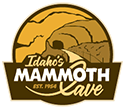Idaho is famous for its rugged mountains, quiet forests, and winding rivers that cut through some of the most remote parts of the American West. Out of all these scenic waterways, the Salmon River stands out for its natural beauty, varied wildlife, and unique nickname: “The River of No Return.” Whether you’re into whitewater rafting, fishing, or just relaxing by a riverside camp, the Salmon River offers an unforgettable way to experience Idaho’s wild side.
The River of No Return
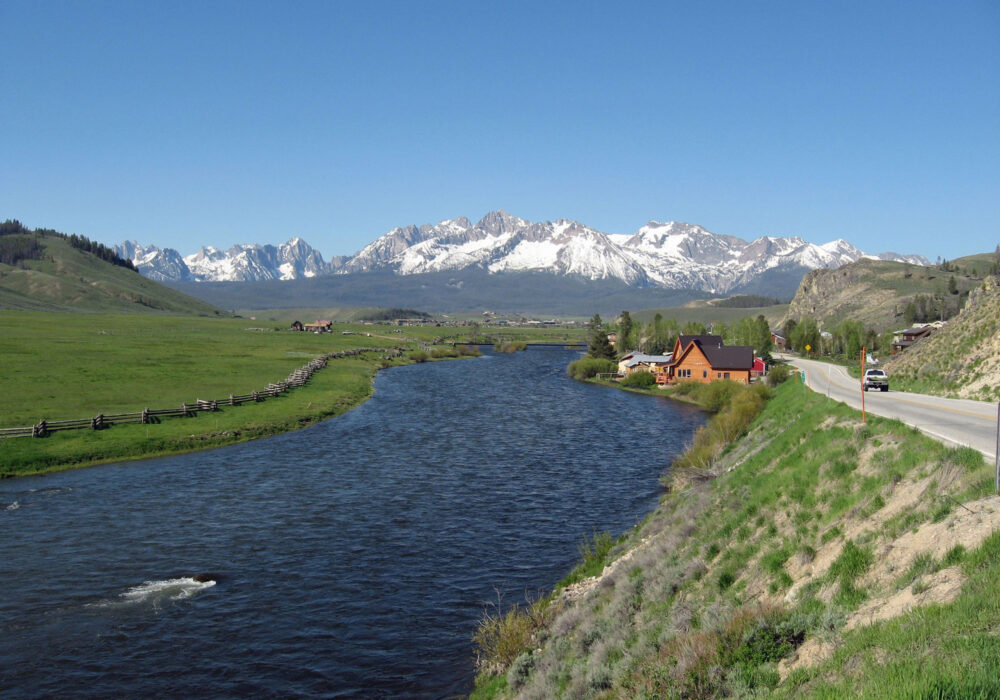
“Sawtooth Mountains and Salmon River” by Fredlyfish4 is licensed under CC BY-SA 4.0.
The Salmon River got its mysterious nickname, “The River of No Return,” because early travelers found it nearly impossible to float downstream and then make their way back against the swift currents. While modern boats and technology have made it easier to venture its waters and return safely, the nickname continues to capture people’s imagination.
Stretching 425 miles from its headwaters in central Idaho to its junction with the Snake River on the Oregon border, the Salmon is one of the longest free-flowing rivers in the lower 48 states. It remains undammed along its entire main stem, which means its water flows naturally through deep canyons, thick forests, and remote wilderness areas. This wild character is one of the main reasons the Salmon River is considered a crown jewel for rafting, fishing, and exploring the backcountry.
A Canyon Deeper Than the Grand Canyon
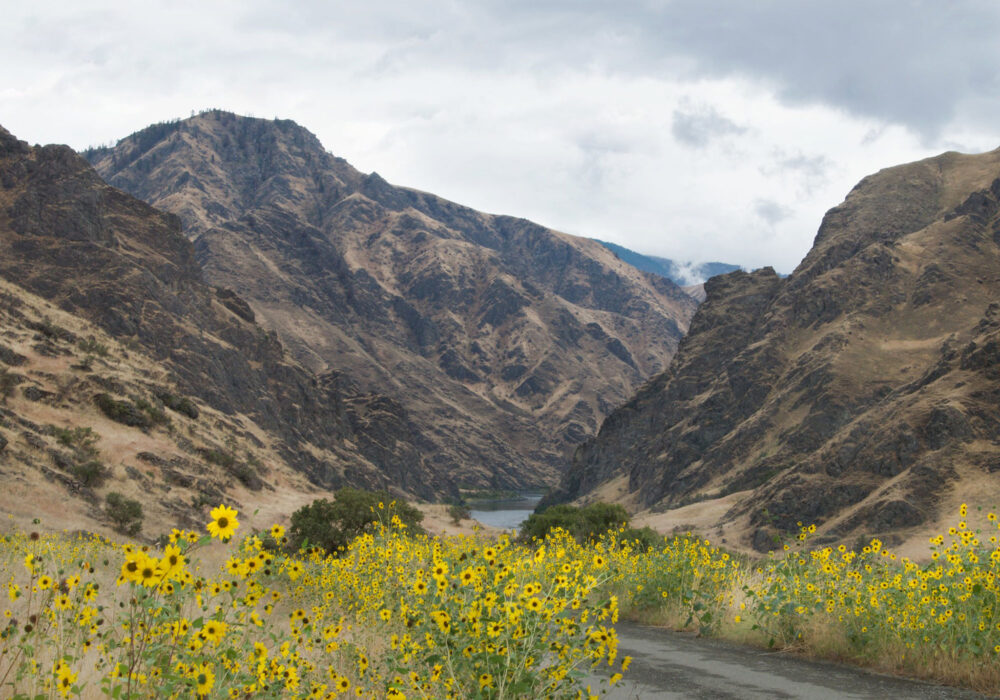
“Sunflowers At Pittsburg Landing, Hell’s Canyon” by A.Davey is licensed under CC BY 2.0.
One of the most surprising facts about the Salmon River is that it flows through the second-deepest canyon in North America, outdone only by Hells Canyon on the Snake River. In fact, parts of the Salmon River canyon are even deeper than sections of the Grand Canyon. For about 180 miles, the Salmon’s canyon walls rise more than a mile above the river, creating a dramatic backdrop of granite cliffs and steep slopes that few people get to see up close.
If you’re looking for some of Idaho’s oldest geological history, you’ll find it here. Rocks near the canyon town of Shoup date back roughly 1.5 billion years, among the oldest in the state. The process that carved the Salmon River Canyon began roughly 35 to 45 million years ago, as water and geologic forces slowly shaped the rugged landscape we see today.
Untamed Wilderness
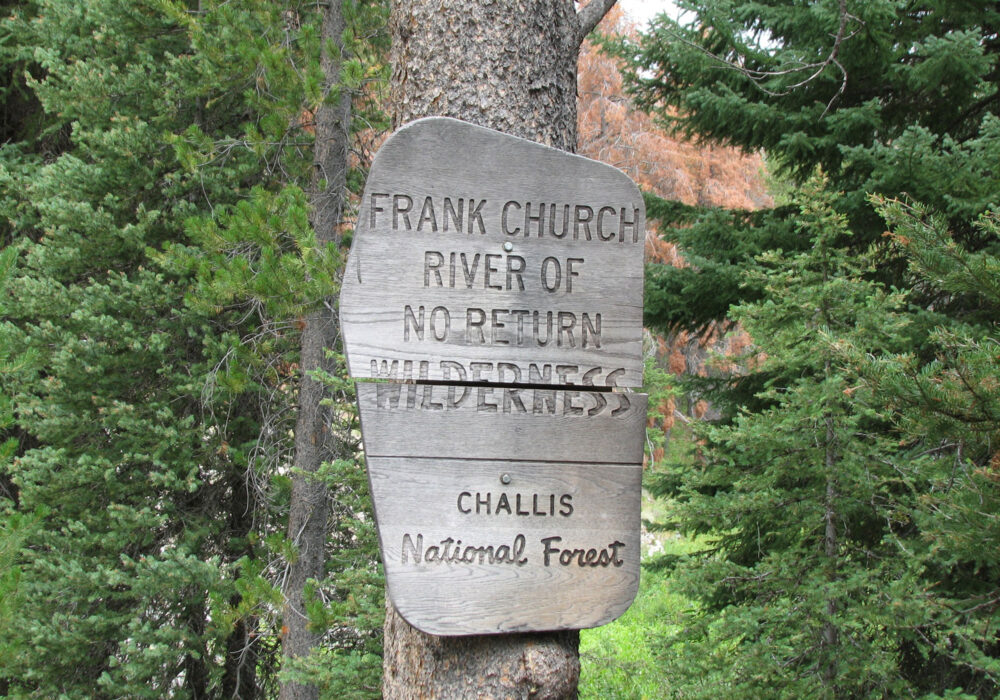
“Entering the Frank Church” by Rex Parker is licensed under CC BY 2.0.
A large portion of the Salmon River flows through or borders protected wilderness. The Frank Church–River of No Return Wilderness, spanning over 2.3 million acres, covers much of the river’s upper and middle sections. This is the largest wilderness area in the lower 48 states, and it stands mostly unchanged by modern development. Nearby, the Gospel-Hump Wilderness forms part of the Salmon’s southern boundary.
When you float the Salmon, you may not see roads, towns, or signs of civilization for miles. Instead, you’ll pass through stretches of rocky shoreline, white sandy beaches, and dense pine forests. Bald eagles might soar overhead, and bighorn sheep sometimes come down to the water to drink. In this part of Idaho, nature truly takes center stage.
The River’s Wildlife

The Salmon River supports a remarkable range of wildlife, especially fish. Wild cutthroat trout and rainbow trout swim these waters, along with sockeye salmon, Chinook salmon (spring, summer, and fall runs), and steelhead. This river system has some of the best steelhead and Chinook habitat in the entire Columbia River basin. During their long migration, these fish overcome eight dams and travel about 900 miles from the Pacific Ocean to reach the cold mountain waters of Idaho, where they spawn.
Bull trout, mountain whitefish, smallmouth bass, and white sturgeon also inhabit the Salmon River. White sturgeon can grow to impressive sizes—some have been recorded at over six feet long. Anglers visiting the river often find thrilling fishing opportunities, whether they’re casting from shore or floating downstream in a drift boat.
Beyond fish, the basin supports healthy populations of black bear, elk, mountain lion, bighorn sheep, and moose, as well as birds like osprey and herons. In truly wild areas, you might even encounter wolves or wolverines. Because of the remote nature of the Salmon’s canyon, animals thrive in an environment where they rarely see humans.
Rafting the Salmon River
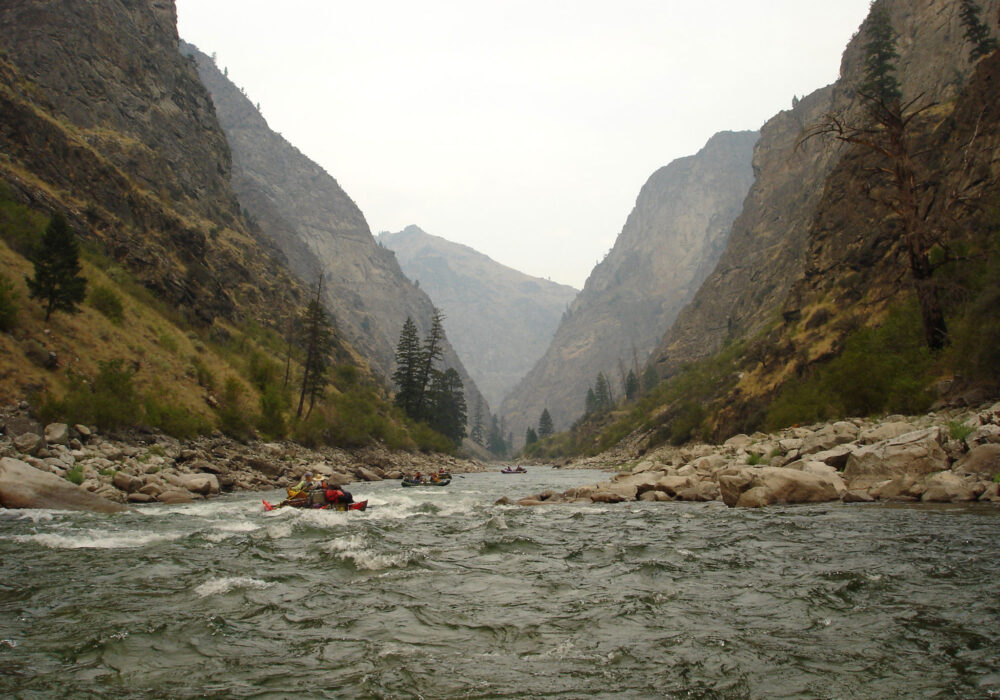
“20100915-FS-Salmon-JC-001” by Forest Service Photography is marked with Public Domain Mark 1.0.
One of the Salmon River’s biggest draws is whitewater rafting. The main stem of the Salmon has “pool-and-drop” rapids, meaning calm sections of water are interspersed with thrilling rapids. This mix allows rafters to experience both bursts of excitement and quiet moments where they can appreciate the canyon’s towering walls.
For multi-day journeys, people often float sections like the Main Salmon or the Middle Fork. Both are famous for their rollercoaster rapids, clear water, and sandy beaches that become perfect overnight campsites. Outfitters from all over the country lead guided trips, providing gear, food, and expertise so you can simply enjoy the ride. The Salmon River really has something for every skill level, from calm water perfect for families or beginners to challenging Class IV rapids that will keep even the most experienced boaters on their toes.
Fishing the River of No Return
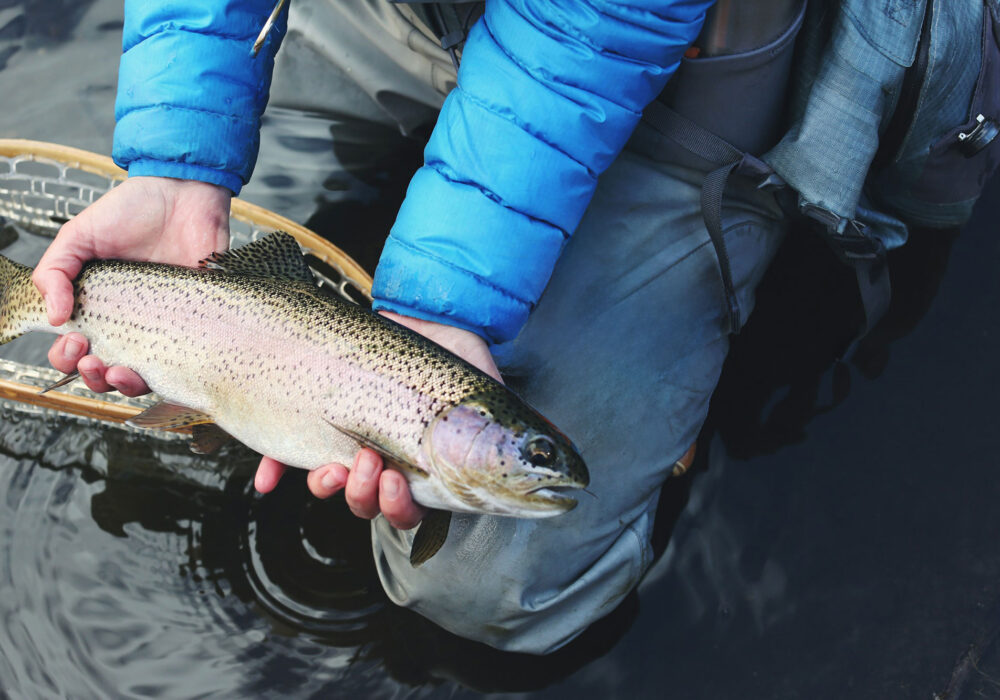
If you’re an angler, the Salmon River won’t disappoint. Depending on the time of year, you can target different species. Spring to early summer is typically best for salmon fishing, while trout and steelhead seasons vary but often run from fall through early spring (check current Idaho regulations). The presence of wild steelhead and Chinook salmon makes the Salmon River ecosystem especially important, and anglers are encouraged to practice responsible fishing techniques, such as catch-and-release for protected species.
A valid Idaho fishing license is required, along with any relevant tags or permits for certain fish like salmon or steelhead. Keep an eye on posted regulations and consider hiring a local guide if you’re new to the area. A local guide will know the best holes, runs, and seasonal patterns to help you land your dream fish.
The Upper Salmon River: Stanley to North Fork
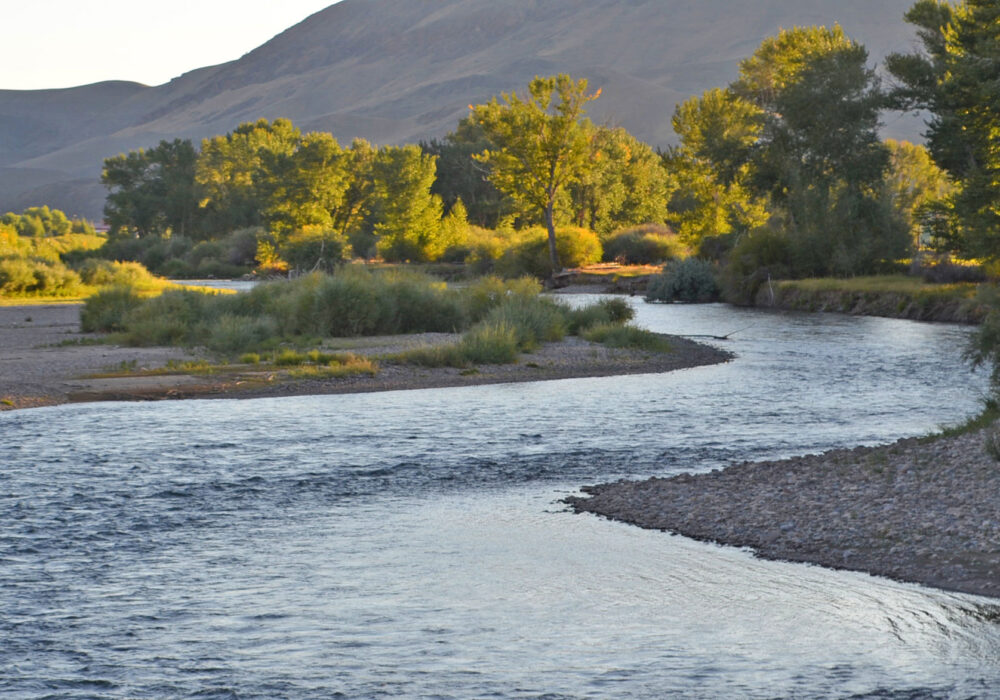
“Upper Salmon River, Ellis Idaho, Sept 2014” by BLMIdaho is licensed under CC BY 2.0.
The Upper Salmon River (from the town of Stanley down to North Fork) offers a range of recreation with easier access thanks to highways paralleling much of this stretch. You can find boat ramps, campgrounds, and small communities like Challis, Salmon, and Clayton along the way. Class I to Class IV rapids can be found in different parts of this upper section, meaning it’s suitable for families on a mellow float or for more adventurous paddlers looking for a bit of a thrill.
Spots like Torrey’s Hole, Challis Bridge, and Kilpatrick serve as popular put-ins or take-outs, and the local Bureau of Land Management (BLM) and U.S. Forest Service offices oversee many of these access points. Along the banks, you might spot bald eagles, elk, or even bighorn sheep. Near Stanley, hot springs bubble up along the river, offering a wonderful way to soak and warm up if the water’s chilly.
The Lower Salmon River: Vinegar Creek to the Snake
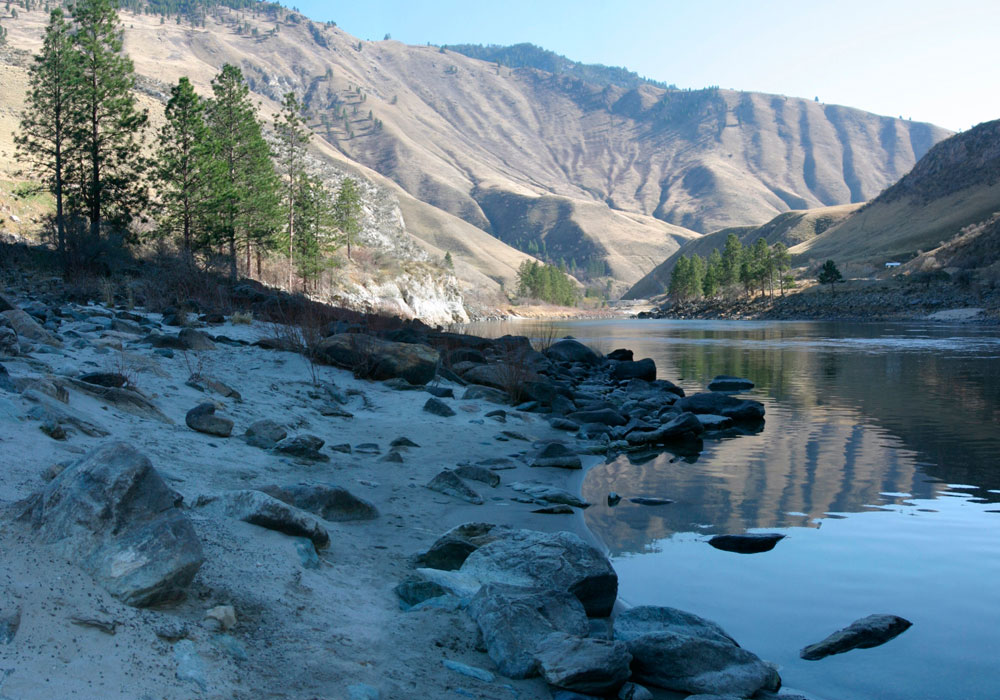
“Lower Salmon River in Idaho” by mypubliclands is licensed under CC BY 2.0.
Once the Salmon leaves the central mountains, it swings west near the town of Riggins and becomes the Lower Salmon River. From Vinegar Creek to the confluence with the Snake River, it travels about 112 miles through deep canyons and rugged gorges. This section of river is known for its Class II-IV rapids, making it a popular run for rafters and kayakers looking for thrills. Large, smooth beaches show up along the banks, perfect for camping under the stars.
The Lower Salmon area is roadless for a good portion of its journey, so the only way to see many of these canyon stretches is by boat. Sections near White Bird or Hammer Creek have established boat ramps for launching and retrieval, and numerous local outfitters can help coordinate shuttles or guide services. The unique geography here, combined with the strong current and lively rapids, makes the Lower Salmon a favorite for multi-day river camping trips.
The Canyon Environment
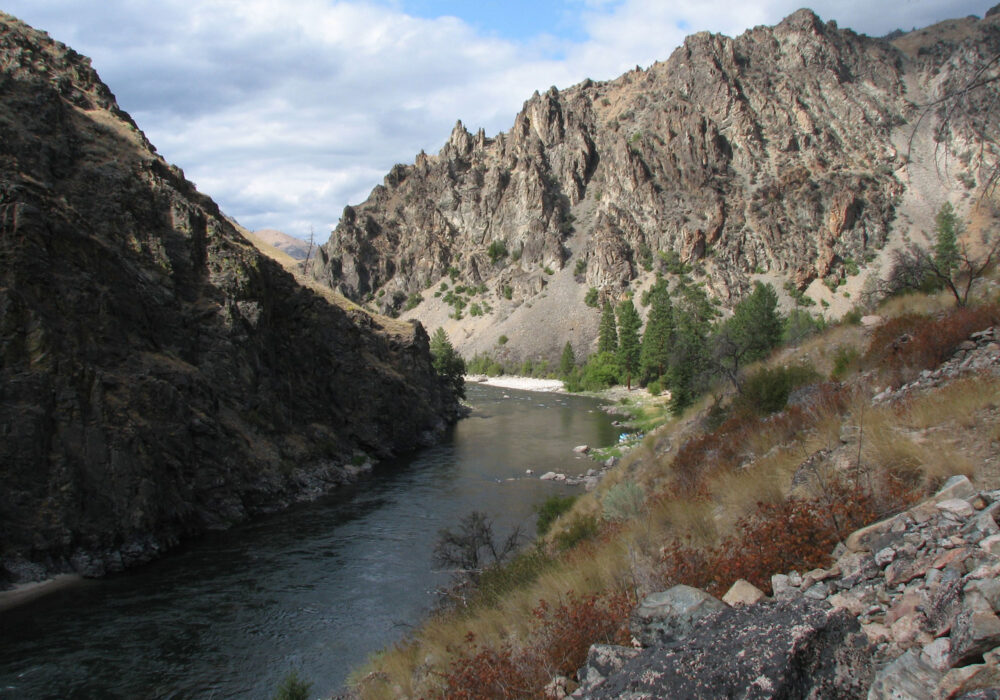
“Middle Fork Salmon River Idaho” by Rex Parker is licensed under CC BY 2.0.
It’s not just whitewater or fishing that attracts visitors to the Salmon River. The canyon itself is a fascinating environment, showcasing rocky shores, pine-forested slopes, and rolling grasslands. In late summer, certain hillsides turn a golden color as grasses dry in the heat, contrasting with the cool green of pines near the water. Springtime brings fresh wildflowers, especially in areas with enough soil and sun.
Because so much of the river passes through wilderness or roadless zones, you’re likely to encounter an almost untouched environment. Visitors are asked to practice Leave No Trace principles. Pack out all trash, minimize campfire impacts (or skip fires altogether when they’re restricted), use portable toilets or vault toilets when available, and respect wildlife by not approaching animals or leaving food out.
Practical Tips & Etiquette
- Permits & Regulations: Some sections, especially in the Frank Church–River of No Return Wilderness, may require permits for overnight trips. Check with the U.S. Forest Service or BLM offices for details about specific stretches of the river.
- Boat Ramp Etiquette: Move your boat in and out of the ramps quickly to avoid blocking others. Park your vehicle away from loading areas so people can easily access the ramps.
- Fishing Etiquette: Give other anglers space, steer clear of fishing lines, and comply with local catch-and-release or slot-limit rules. The Salmon’s fish populations are vital, so respect all regulations designed to protect them.
- Wildlife Respect: Many animals depend on the Salmon’s clean water and habitat. Watch from a distance, don’t feed wildlife, and store food properly in camps to avoid attracting curious critters or bears.
- Group Size: Keep in mind that large groups can have a bigger impact on the environment. If you’re planning a group trip, ensure everyone knows best practices to keep the canyon as pristine as possible.
- Plan for Weather: Summers can be hot in the canyons, and sudden thunderstorms can pop up. Bring plenty of water, sun protection, and a sturdy rain jacket or shelter. In spring and fall, temperatures can change drastically between day and night.
Why the Salmon River is a Beautiful Place to Visit in Idaho
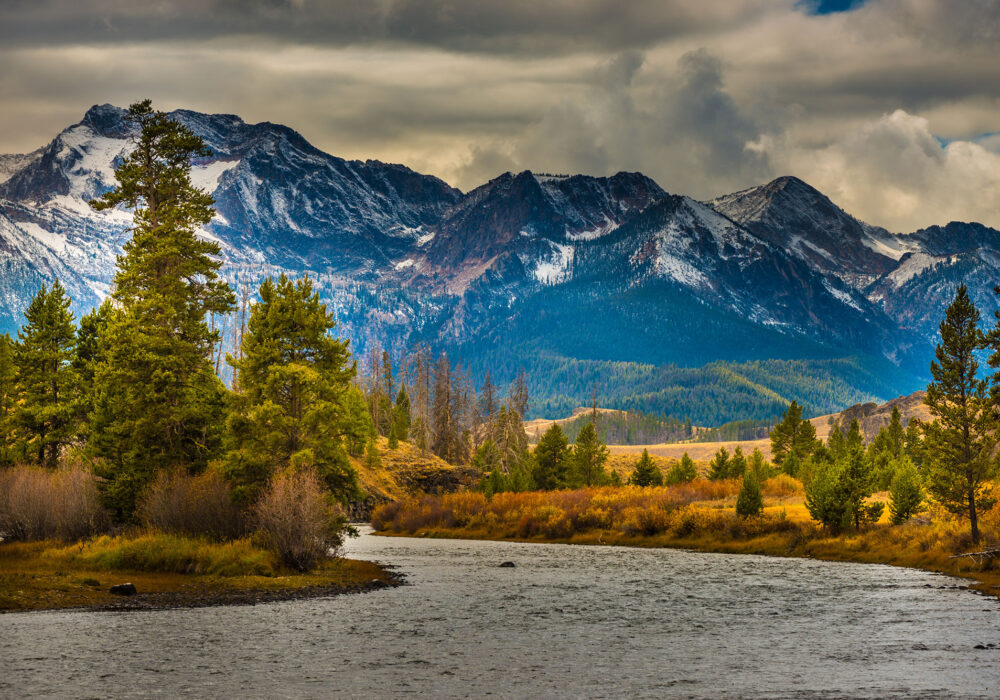
The Salmon River is truly the definition of wild. It flows clear and free for hundreds of miles, carving a path through some of America’s most remote wilderness. The fact that no dams interrupt its course means the river’s natural flow sets the pace of life here—from the fish migrations that fight upstream to the rafters riding thrilling rapids. Each turn in the canyon reveals another picturesque beach, cliff face, or wildlife sighting that makes you feel like you’re in a hidden world.
If you want to unplug from everyday life, the Salmon River is ready to oblige. Multi-day floats allow for deep immersion in Idaho’s backcountry, far away from cell service or busy roads. Even short trips along the Upper Salmon near towns like Stanley and Challis can feel like a step back in time as you catch glimpses of eagles overhead and watch the river’s currents swirl below you.
For anglers, boaters, hikers, or anyone longing for a true wilderness experience, the Salmon River stands out. You can float tranquil waters one day and tackle exhilarating rapids the next. You can fish for salmon and steelhead in the same waters that feed black bear and eagle populations. And you can sleep on a soft sandbar beneath towering granite walls, listening to the river’s steady flow lull you to sleep.
The Salmon River is more than just a beautiful place to visit in Idaho—it’s a living reminder of how nature thrives when left to follow its own course. The majestic canyons, abundant wildlife, and thrilling waters draw people from around the world, yet it retains a sense of solitude and unspoiled charm. If you’re looking for a genuine adventure that brings you face to face with Idaho’s wild heart, pack your gear and head to the Salmon River. It’s a journey that will stay with you long after you’ve made your way back to the everyday world.
Quick Facts About the Salmon River
- Nickname: Often called the “River of No Return,” it gained this reputation because early travelers found it nearly impossible to go upstream against its swift currents.
- Length: Stretching about 425 miles, it’s one of the longest free-flowing rivers in the lower 48 states, entirely within Idaho’s borders.
- Deep Canyon: The Salmon River carves through the second-deepest canyon in North America—some parts are even deeper than sections of the Grand Canyon.
- Untamed Flow: The river is undammed along its main stem, allowing water to run naturally through rugged canyons and remote wilderness areas.
- Famous Wilderness: A large portion flows through the Frank Church–River of No Return Wilderness—over 2.3 million acres of mostly untouched backcountry.
- Rich Fishing: Home to various fish species, including Chinook salmon, steelhead, rainbow trout, cutthroat trout, and bull trout, making it a top spot for anglers.
- Whitewater Rafting: Boasting exciting rapids and beautiful sandy beaches, the Salmon River is a favorite for multi-day rafting and kayaking trips.
- Historic Rocks: Near the town of Shoup, rock formations date back about 1.5 billion years—some of the oldest in Idaho.
- Diverse Wildlife: The basin supports deer, elk, black bears, mountain lions, bald eagles, and even wolves, all thriving in this remote habitat.
- Accessibility: Different sections, like the Upper and Lower Salmon, offer varying levels of difficulty for boaters and sightseers—ranging from mellow Class I floats to challenging Class IV rapids.
Idaho’s Mammoth Cave
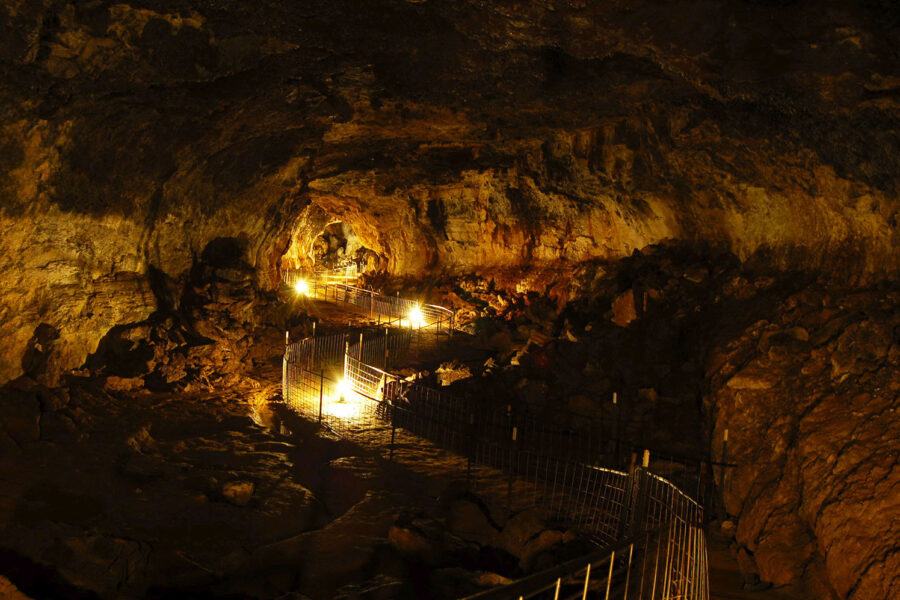
Planning a trip to Idaho? Don’t forget to put Idaho’s Mammoth Cave at the top of your list. As one of the most beautiful places to visit in Idaho, you can explore a unique and awe-inspiring underground landscape at your own personal pace with our self-guided tours. In addition to the cave, there are two privately owned museums of natural history on-site, the Shoshone Bird Museum and the Richard Arthur Olsen Museum featuring a wealth of exhibits that has earned them nickname “The Smithsonian of the Desert,” making it an unforgettable stop for the whole family.
Located eight miles north of Shoshone, Idaho, on Highway 75, Idaho’s Mammoth Cave will be open for seasonal tours from May – October, from 10 a.m. to 6 p.m. (with the last tours of the day going out at 5 p.m.), 7 days a week, including all major holidays. For more information, visit idahosmammothcave.com or call (208) 329-5382.
